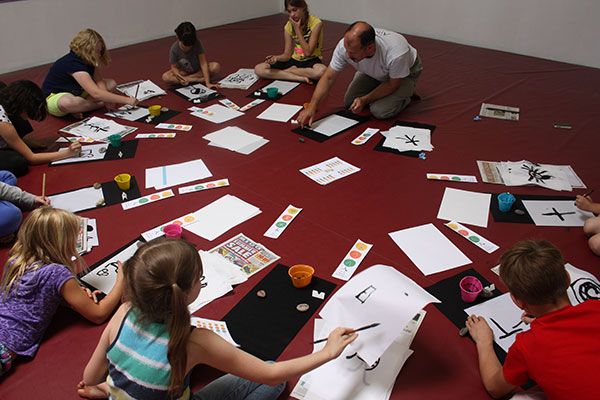Kids learn Japanese calligraphy
The Mughaider Child Centre organised a workshop for kids in Japanese calligraphy by Tankei, a professional calligraphy artist from Japan, on Sept 19th .
The workshop has been designed to teach kids and a number of artists from 14 child centres in Sharjah the art of Japanese calligraphy that does not require familiarity with the Japanese language.
Tomoyoshi Kato, the coordinator and interpreter of Tankei’s artificial work, explained the art of calligraphy saying: «It is the art of the line... anyone can draw lines, you have no need to learn the language .»
«Japanese calligraphy is not only for the Japanese, it can be taught to the whole world,» he added, as «art is the way you can send messages with symbols in a creative style.»
During the workshop, a documentary video was shown for kids about the complicated steps of the four main tools of drawing: ink, paper, ink stones , and brushes .
Kids have recognized that the four tools need time to be produced and can last for an even longer time. Producing the ink, for example, takes five to ten years, and it can be used for almost 2,000 years. The paper is made from mulberry trees and the process can take up to one year. This type of paper comprises telescopic fibers that can preserve the ink for thousands of years.
Brushes are made from sheep’s wool, feathers and horsetail hair. The ink stone is made from slate, which is well known for being a smooth stone found in the mountains.
Kids learned the Sosho style of calligraphy in Japanese, which is so easy and can be drawn quickly without complete accuracy in drawing. They learned to draw the symbol of affection during the workshop.
Consequentially, Kato clarified that there are several types of writing for Japanese characters such as: Hiragana, Katakana, and Kanji, that are combined in Japanese people’s daily life, both officially and personally.
 Kids learn Japanese calligraphy
Kids learn Japanese calligraphySource: gulftoday.ae



